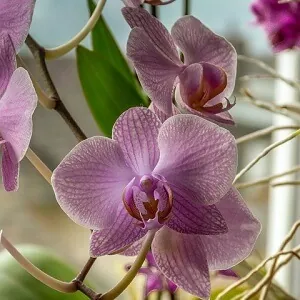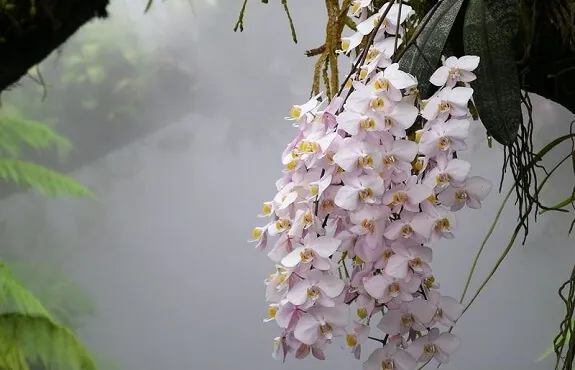 Blooming orchids look so fragile that you could not imagine it growing in pots or indoors especially if you are an “orchid beginner”. Phalaenopsis, also known as moth orchids are the best orchids to be cultivated at home. It is not only exquisite but is also considered as one of the fastest growers and long lasting among all kinds of orchids. Growing moth orchids is one of your best choices to add aesthetics at home, especially when it is planted in garden pots.
Blooming orchids look so fragile that you could not imagine it growing in pots or indoors especially if you are an “orchid beginner”. Phalaenopsis, also known as moth orchids are the best orchids to be cultivated at home. It is not only exquisite but is also considered as one of the fastest growers and long lasting among all kinds of orchids. Growing moth orchids is one of your best choices to add aesthetics at home, especially when it is planted in garden pots.
Though it usually grows on branches in warm humid areas, you don’t have to worry about propagating this plant if you are not living in the tropics. Its hardiness will make it survive in different growing conditions, given that proper requirements are met. Moth orchids can flower multiple times a year if proper care is given.
Put in mind that moth orchids are delicate. Growing it in pots needs extra care and attention, but you will be happy once it flourishes and you can even gain profit from it. Most of it is for sale, especially if cultured or grown as hybrids.
Potting Media
A plastic pot or terracotta pot can be used depending on the growing condition as long as it will comfortably hold the root system. The pots should be well-drained with holes at the bottom so that the water could flow freely and prevent retention. A plastic one dries slowly and plants should not be watered as often as those grown in clay pots. Terracotta pots will do well in areas of high humidity and little natural breeze.
In growing moth orchids, never ever use your garden soil. You need a potting mix that should include generous amount of moisture holding material like sphagnum moss, bark mix, perlite, washed coir chunks or combination of these. This plant grows best when the roots are moist, not soggy. A proper potting mix can keep you from over watering.
Planting
Planting moth orchids is best done in spring after flowering usually 1 to 3 years. Seedlings usually grow fast enough that requires repotting yearly. It should be repotted in a filter grade medium. In repotting, choose a pot size that fits the roots best not the leaves; a small pot is ideal since the root could dry faster. Place the flower at the middle of the pot, then fill in the pot with bark mix. Don’t forget to soak the bark beforehand in water.
Since moth orchids grow in a very shady location in the forest, this plant should not be placed in direct sunlight or the leaves will burn easily. When growing in pots, place it near a window so that it could absorb natural light. Not enough light could prevent it from re-flowering. A yellow leaf indicates that the plant is getting too much light; a dark green leaf indicates too much shade. The leaf should be firm and mid-green.
Watering
Moth orchids do not have major water storage, so it is important not to wait for the plant to completely dry out. It is best to water the potting mix, not the plant itself. If watered overhead, the plant should be tilted on an angle so that the water does not lie in the crown. This will help prevent rotting. The plant should never dry out, but should never be left soaking wet overnight. During sunny days, it is best to water before 10:00am and let the leaves dry out. In the cold morning, wait till the water warms up to room temperature because cold water will drop the buds.
Humidity
Moth orchids usually grow in the tropics wherein the environment is much more humid than the average room. When growing in pots, you can increase humidity by grouping the plants together. Let the air move to prevent bacterial disease. You can also put a tray with water below the pot; just make sure to put gravel in between to prevent direct contact of pot and water.
Pest Control
Mealy bugs are common in moth orchids but they can be controlled by spraying the leaf with an eco-oil. Once they are controlled, you don’t have to worry about your plant; just wait for it to flourish and you will be surprised by its beauty.




0 Comments